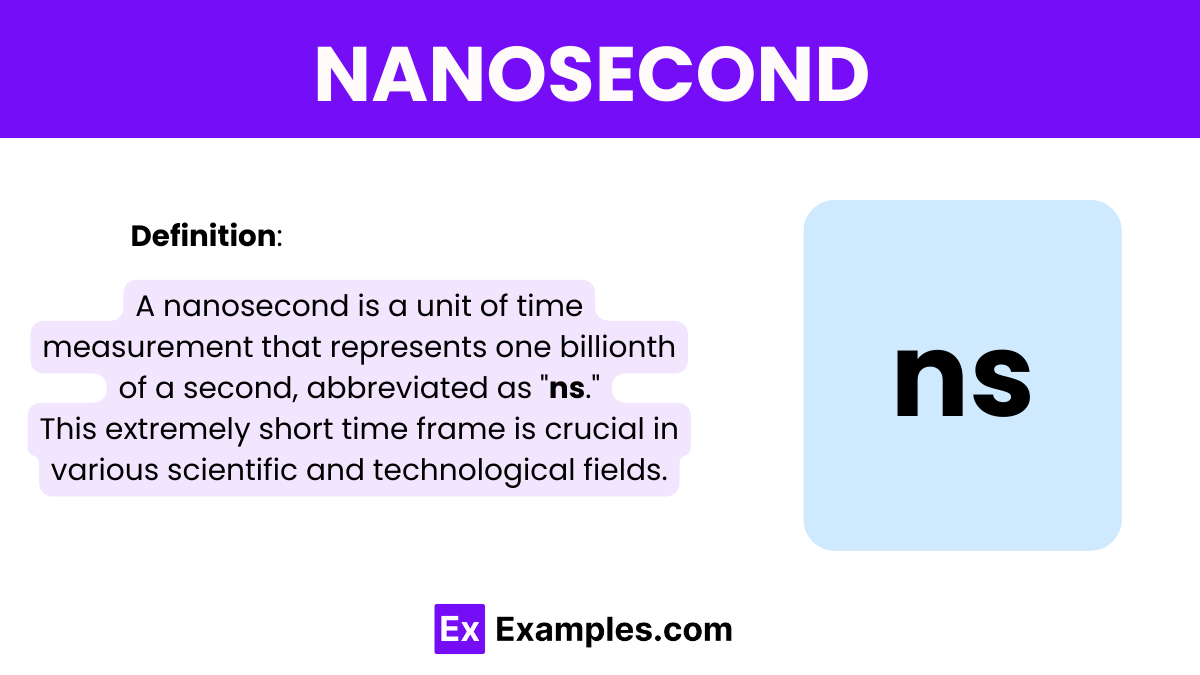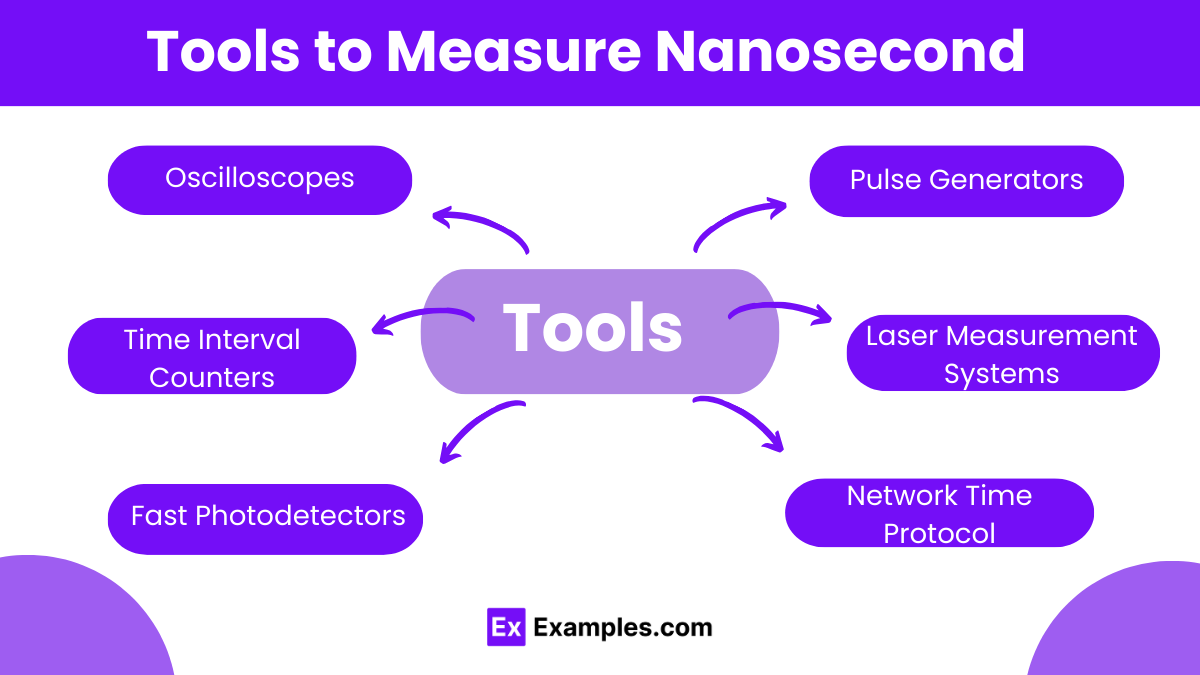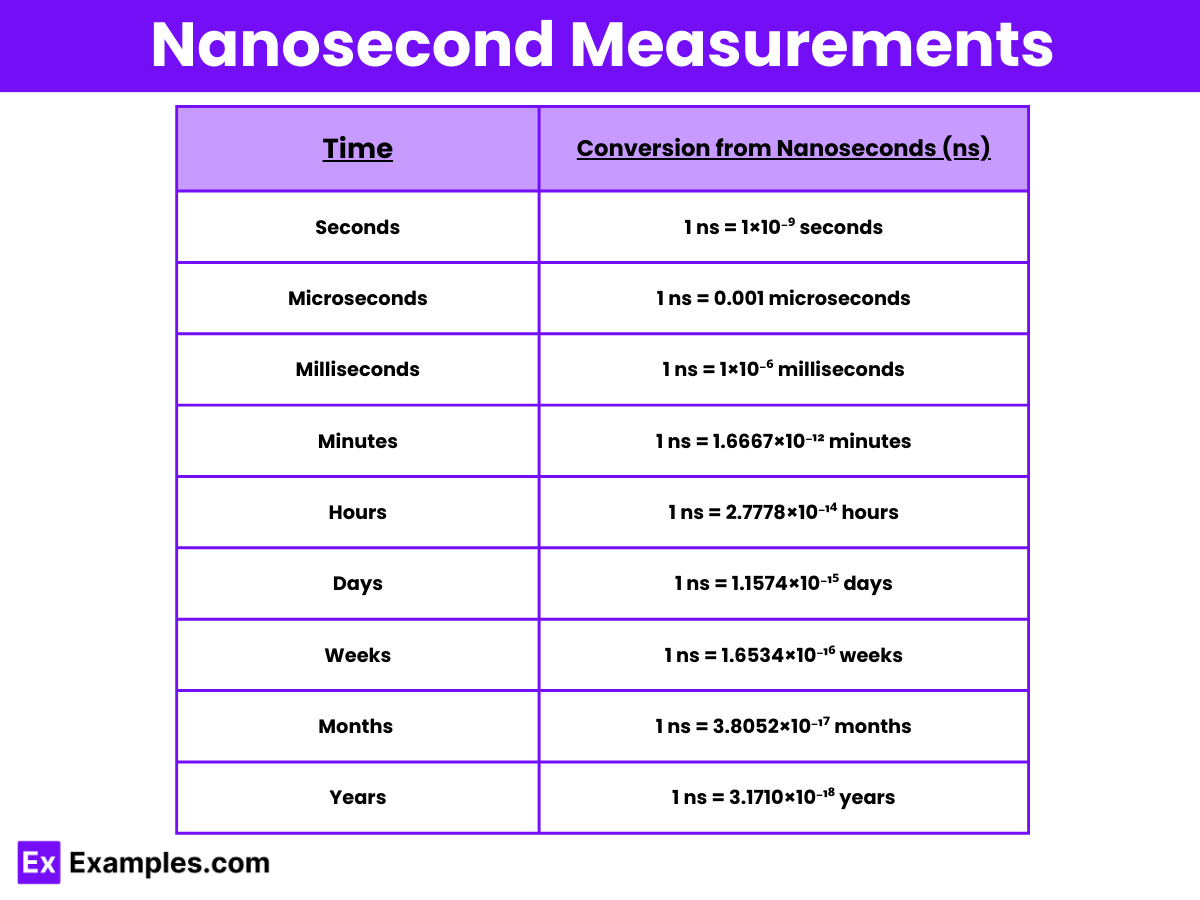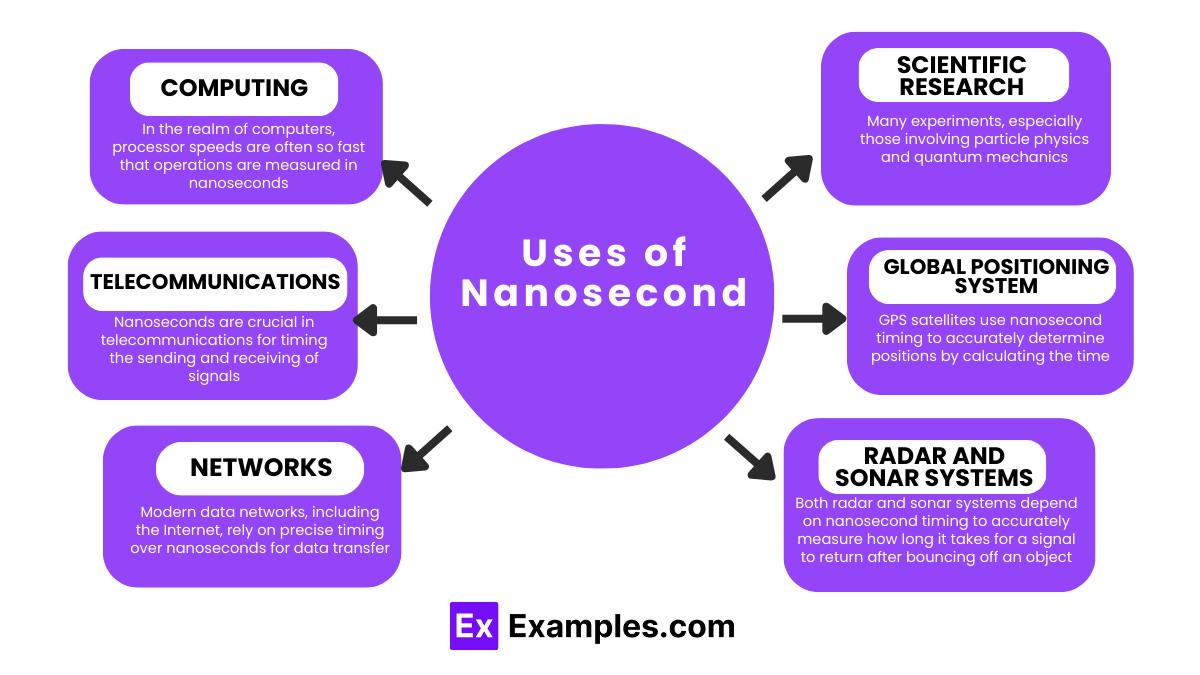How many nanoseconds are in one second?
1,000,000
1,000,000,000
1,000,000,000,000
1,000,000,000,000,000


A nanosecond is a unit of time in the International System of Units (SI) that equals one billionth of a second. It is symbolized as ns. This extremely short time frame is crucial in various scientific and technological fields, particularly in electronics and computing, where processes and reactions occur at incredibly fast speeds. Nanoseconds are used to measure the time it takes for light or electrical signals to travel short distances, or the speed of operations within computer processors.
This minute interval is widely used in physics, chemistry, and computer science to gauge extremely rapid events, such as the speed of electrical impulses or the time it takes for light to travel short distances. Understanding and measuring nanoseconds are crucial for the development and operation of high-speed and high-frequency technologies.

Measuring nanoseconds requires highly precise and specialized tools due to the extremely brief duration of a nanosecond, which is one billionth of a second. Here are some tools commonly used for such precise measurements:
A nanosecond laser is a type of laser that emits light pulses with durations in the range of nanoseconds (one billionth of a second). These lasers are known for their ability to deliver high-energy pulses in extremely short bursts. The applications and technology behind nanosecond lasers are diverse and impact several fields significantly. Nanosecond lasers operate by pumping energy into a laser medium, which then emits it as a short, intense pulse of light. The duration of these pulses ranges typically from about 1 to 30 nanoseconds. This brief but powerful output makes nanosecond lasers ideal for applications requiring high peak power without extensive heat damage to the material being targeted.

Here’s a table showing the conversion of nanoseconds to other common units of time:
| Time Unit | Conversion from Nanoseconds (ns) |
|---|---|
| Seconds | 1 ns = 1×10⁻⁹ seconds |
| Microseconds | 1 ns = 0.001 microseconds |
| Milliseconds | 1 ns = 1×10⁻⁶ milliseconds |
| Minutes | 1 ns = 1.6667×10⁻¹² minutes |
| Hours | 1 ns = 2.7778×10⁻¹⁴ hours |
| Days | 1 ns = 1.1574×10⁻¹⁵ days |
| Weeks | 1 ns = 1.6534×10⁻¹⁶ weeks |
| Months (average) | 1 ns = 3.8052×10⁻¹⁷ months |
| Years | 1 ns = 3.1710×10⁻¹⁸ years |
Understanding how to convert nanoseconds to other units of time is crucial when dealing with high-speed systems and precise timing requirements in technology and science. Here’s a straightforward guide to converting nanoseconds to and from other common units of time:

The term “formula of nanosecond” typically refers to its conversion relation to seconds: 1 nanosecond (ns) equals 1×10⁻⁹ seconds. This formula highlights its role as one-billionth of a second.
A nanosecond is one billionth of a second, represented as 1 ns or 0.000000001 seconds. Thus, there are nine zeros in the decimal representation of a nanosecond.
A nanosecond measures time and is one billionth of a second. It is used to gauge extremely short durations, particularly in science, technology, and high-speed electronic processes.
Text prompt
Add Tone
10 Examples of Public speaking
20 Examples of Gas lighting
How many nanoseconds are in one second?
1,000,000
1,000,000,000
1,000,000,000,000
1,000,000,000,000,000
Convert 5 seconds to nanoseconds.
5,000,000
5,000,000,000
5,000,000,000,000
5,000,000,000,000,000
How many nanoseconds are in one millisecond?
1,000
10,000
100,000
1,000,000
Convert 250 milliseconds to nanoseconds.
250,000
2,500,000
25,000,000
250,000,000
If a computer processor has a clock speed of 2.5 GHz, how long is one clock cycle in nanoseconds?
0.4
0.5
0.6
0.7
Convert 1 microsecond to nanoseconds.
100
1,000
10,000
100,000
How many nanoseconds are in 0.5 seconds?
500,000,000
5,000,000,000
50,000,000,000
500,000,000,000
Convert 10 nanoseconds to milliseconds.
0.00001
0.0001
0.001
0.01
If light travels approximately 30 cm in one nanosecond, how far does it travel in 10 nanoseconds?
0.3 meters
3 meters
30 meters
300 meters
How many nanoseconds are in a minute?
6,000,000,000
60,000,000,000
600,000,000,000
6,000,000,000,000
Before you leave, take our quick quiz to enhance your learning!

